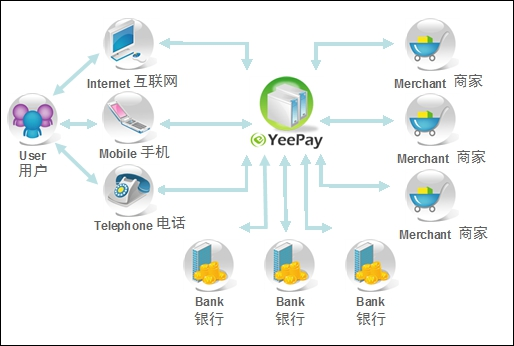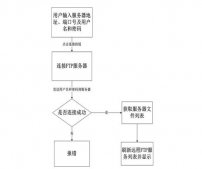1.Shito简介
1.1 什么是shiro
Apache Shiro是一个java安全(权限)框架
Shiro可以非常容易的开发出足够好的应用,其不仅可以用在javase环境,也可以用在javaee环境
shiro可以完成,认证,授权,加密,会话管理,web集成,缓存等。
下载地址:http://shiro.apache.org/
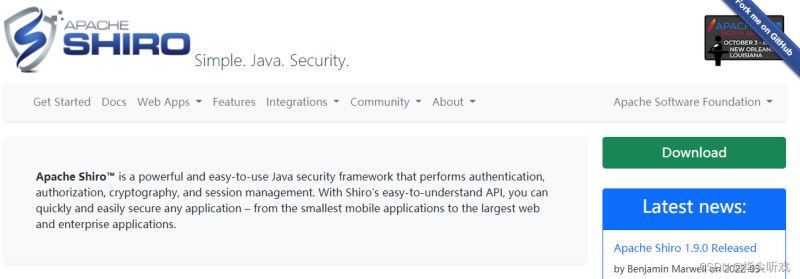
1.2 有哪些功能
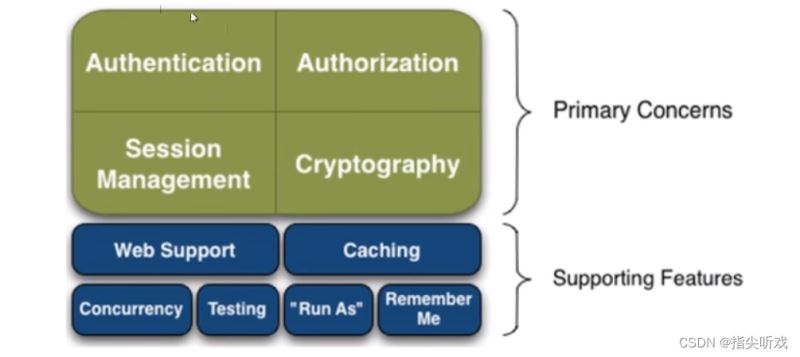
2.QuickStart
官网下载的可能慢一些
首先新建一个普通的maven项目,然后在项目中导入新的maven项目模块,结构如下:
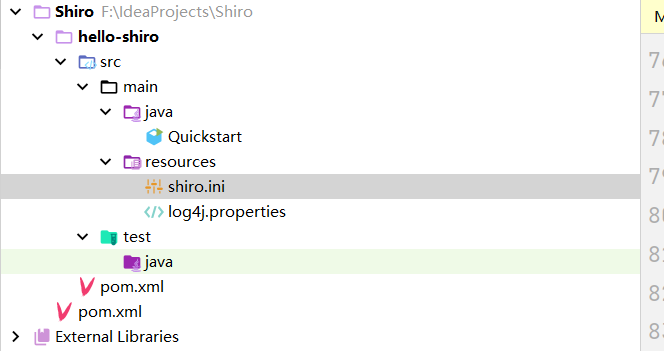
然后开始创建我们需要的文件,这些文件都可以在官网下载的文件中可以找到:
shiro.ini:
|
1
2
3
4
5
6
7
8
9
10
11
12
13
14
15
16
17
18
19
20
21
22
23
24
25
26
27
28
29
30
31
32
|
# Users and their assigned roles## Each line conforms to the format defined in the# org.apache.shiro.realm.text.TextConfigurationRealm#setUserDefinitions JavaDoc# -----------------------------------------------------------------------------[users]# user 'root' with password 'secret' and the 'admin' roleroot = secret, admin# user 'guest' with the password 'guest' and the 'guest' roleguest = guest, guest# user 'presidentskroob' with password '12345' ("That's the same combination on# my luggage!!!" ;)), and role 'president'presidentskroob = 12345, president# user 'darkhelmet' with password 'ludicrousspeed' and roles 'darklord' and 'schwartz'darkhelmet = ludicrousspeed, darklord, schwartz# user 'lonestarr' with password 'vespa' and roles 'goodguy' and 'schwartz'lonestarr = vespa, goodguy, schwartz# -----------------------------------------------------------------------------# Roles with assigned permissions## Each line conforms to the format defined in the# org.apache.shiro.realm.text.TextConfigurationRealm#setRoleDefinitions JavaDoc# -----------------------------------------------------------------------------[roles]# 'admin' role has all permissions, indicated by the wildcard '*'admin = *# The 'schwartz' role can do anything (*) with any lightsaber:schwartz = lightsaber:*# The 'goodguy' role is allowed to 'drive' (action) the winnebago (type) with# license plate 'eagle5' (instance specific id)goodguy = winnebago:drive:eagle5 |
导入相关依赖 pom.xml,官网未给出详细的依赖,具体的参考给出的git下载的文件,然后做了一些简单的修改。
|
1
2
3
4
5
6
7
8
9
10
11
12
13
14
15
16
17
18
19
20
21
22
23
24
25
26
27
28
29
30
31
32
33
34
35
36
37
38
39
40
41
42
43
44
45
46
|
<?xml version="1.0" encoding="UTF-8"?><project xmlns="http://maven.apache.org/POM/4.0.0" xmlns:xsi="http://www.w3.org/2001/XMLSchema-instance" xsi:schemaLocation="http://maven.apache.org/POM/4.0.0 http://maven.apache.org/xsd/maven-4.0.0.xsd"> <parent> <artifactId>Shiro</artifactId> <groupId>com.nuist</groupId> <version>1.0-SNAPSHOT</version> </parent> <modelVersion>4.0.0</modelVersion> <artifactId>hello-shiro</artifactId> <properties> <maven.compiler.source>8</maven.compiler.source> <maven.compiler.target>8</maven.compiler.target> </properties> <dependencies> <dependency> <groupId>org.apache.shiro</groupId> <artifactId>shiro-core</artifactId> <version>1.4.1</version> </dependency> <!-- configure logging --> <dependency> <groupId>org.slf4j</groupId> <artifactId>jcl-over-slf4j</artifactId> <version>1.7.21</version> </dependency> <dependency> <groupId>org.slf4j</groupId> <artifactId>slf4j-log4j12</artifactId> <version>1.7.12</version> </dependency> <dependency> <groupId>log4j</groupId> <artifactId>log4j</artifactId> <version>1.2.17</version> </dependency> </dependencies></project> |
log4j.prop[erties:
|
1
2
3
4
|
log4j.rootLogger=INFO, stdoutlog4j.appender.stdout=org.apache.log4j.ConsoleAppenderlog4j.appender.stdout.layout=org.apache.log4j.PatternLayoutlog4j.appender.stdout.layout.ConversionPattern=%d %p [%c] - %m%n |
最重要的配置文件:
QuickStart:
|
1
2
3
4
5
6
7
8
9
10
11
12
13
14
15
16
17
18
19
20
21
22
23
24
25
26
27
28
29
30
31
32
33
34
35
36
37
38
39
40
41
42
43
44
45
46
47
48
49
50
51
52
53
54
55
56
57
58
59
60
61
62
63
64
65
66
67
68
69
70
71
72
73
74
75
76
77
78
79
80
81
82
83
84
85
86
87
88
89
90
91
92
93
94
95
96
97
|
import org.apache.shiro.SecurityUtils;import org.apache.shiro.authc.*;import org.apache.shiro.mgt.DefaultSecurityManager;import org.apache.shiro.mgt.SecurityManager;import org.apache.shiro.realm.text.IniRealm;import org.apache.shiro.session.Session;import org.apache.shiro.subject.Subject;import org.slf4j.Logger;import org.slf4j.LoggerFactory;import javax.naming.InitialContext;public class Quickstart { private static final transient Logger log = LoggerFactory.getLogger(Quickstart.class); public static void main(String[] args) { // 旧方法,由于shiro更新无法正常使用 // Factory<SecurityManager> factory = new IniSecurityManagerFactory("classpath:shiro.ini"); // SecurityManager securityManager = factory.getInstance(); // 新方法 shiro更新问题 解决正常运行 DefaultSecurityManager securityManager = new DefaultSecurityManager(); IniRealm iniRealm = new IniRealm("classpath:shiro.ini"); securityManager.setRealm(iniRealm); SecurityUtils.setSecurityManager(securityManager); // Now that a simple Shiro environment is set up, let's see what you can do: // 获取当前用户对象 Subject currentUser = SecurityUtils.getSubject(); // 通过当前用户拿到session Session session = currentUser.getSession(); session.setAttribute("someKey", "aValue"); String value = (String) session.getAttribute("someKey"); if (value.equals("aValue")) { log.info("subject =>! [" + value + "]"); } // 判断当前用户是否被认证 if (!currentUser.isAuthenticated()) { UsernamePasswordToken token = new UsernamePasswordToken("lonestarr", "vespa"); token.setRememberMe(true); // 设置记住我 try { currentUser.login(token); } catch (UnknownAccountException uae) { log.info("There is no user with username of " + token.getPrincipal()); } catch (IncorrectCredentialsException ice) { log.info("Password for account " + token.getPrincipal() + " was incorrect!"); } catch (LockedAccountException lae) { log.info("The account for username " + token.getPrincipal() + " is locked. " + "Please contact your administrator to unlock it."); } // 最重要的一个异常,认证异常 catch (AuthenticationException ae) { //unexpected condition? error? } } //say who they are: //print their identifying principal (in this case, a username): log.info("User [" + currentUser.getPrincipal() + "] logged in successfully."); //test a role: if (currentUser.hasRole("schwartz")) { log.info("May the Schwartz be with you!"); } else { log.info("Hello, mere mortal."); } // 测试一个简单的权限 // 粗粒度的一个权限限制 if (currentUser.isPermitted("lightsaber:wield")) { log.info("You may use a lightsaber ring. Use it wisely."); } else { log.info("Sorry, lightsaber rings are for schwartz masters only."); } //a (very powerful) Instance Level permission: if (currentUser.isPermitted("winnebago:drive:eagle5")) { log.info("You are permitted to 'drive' the winnebago with license plate (id) 'eagle5'. " + "Here are the keys - have fun!"); } else { log.info("Sorry, you aren't allowed to drive the 'eagle5' winnebago!"); } //注销功能 currentUser.logout(); System.exit(0); }} |
以上主要的几个关键部分代码:
对象初始化部分
|
1
2
3
4
5
6
|
// 新方法 shiro更新问题 解决正常运行DefaultSecurityManager securityManager = new DefaultSecurityManager();IniRealm iniRealm = new IniRealm("classpath:shiro.ini");securityManager.setRealm(iniRealm);SecurityUtils.setSecurityManager(securityManager); |
获取当前用户
|
1
|
Subject currentUser = SecurityUtils.getSubject(); |
判断用户是否被认证
|
1
|
!currentUser.isAuthenticated() |
判断用户是否具有什么角色
|
1
|
currentUser.hasRole("schwartz") |
判断用户是否拥有权限
|
1
|
currentUser.isPermitted("lightsaber:wield") |
注销
|
1
|
currentUser.logout(); |
此时我们运行启动,项目如下,那么一个简单的shiro quickStart 就已经启动好了。

注意
shir最重要的三个部分:
- subject 用户
- SecurityManager 管理所有的用户
- Realm 连接数据
3.SpringBoot中集成
1.导入shiro相关依赖
|
1
2
3
4
5
6
7
8
9
10
11
|
<!--subject 用户SecurityManager 管理所有用户Realm 连接数据--><!--shiro与springboot--><dependency><groupId>org.apache.shiro</groupId><artifactId>shiro-spring</artifactId><version>1.6.0</version></dependency> |
2.自定义UserRealm
|
1
2
3
4
5
6
7
8
9
10
11
12
13
14
15
16
17
18
19
20
21
22
23
24
25
26
27
28
|
package com.nuist.shirospringboot.config;import org.apache.shiro.authc.AuthenticationException;import org.apache.shiro.authc.AuthenticationInfo;import org.apache.shiro.authc.AuthenticationToken;import org.apache.shiro.authz.AuthorizationInfo;import org.apache.shiro.realm.AuthorizingRealm;import org.apache.shiro.subject.PrincipalCollection;/** * @author liuhuanhuan * @version 1.0 * @date 2022/5/8 17:59 * @Description */public class UserRealm extends AuthorizingRealm { @Override protected AuthorizationInfo doGetAuthorizationInfo(PrincipalCollection principalCollection) { System.out.println("执行了=》授权doGetAuthorizationInfo方法"); return null; } @Override protected AuthenticationInfo doGetAuthenticationInfo(AuthenticationToken authenticationToken) throws AuthenticationException { System.out.println("执行了-》认证doGetAuthenticationInfo"); return null; }} |
3.定义shiroConfig
|
1
2
3
4
5
6
7
8
9
10
11
12
13
14
15
16
17
18
19
20
21
22
23
24
25
26
27
28
29
30
31
32
33
34
35
36
37
38
39
40
41
42
43
|
package com.nuist.shirospringboot.config;import org.apache.shiro.spring.web.ShiroFilterFactoryBean;import org.apache.shiro.web.mgt.DefaultWebSecurityManager;import org.apache.shiro.web.session.mgt.DefaultWebSessionManager;import org.springframework.beans.factory.annotation.Qualifier;import org.springframework.context.annotation.Bean;import org.springframework.context.annotation.Configuration;/** * @author liuhuanhuan * @version 1.0 * @date 2022/5/8 17:58 * @Description */@Configurationpublic class ShiroConfig { // shiroFilterConfiguere @Bean public ShiroFilterFactoryBean getShiroFilterFactoryBean(@Qualifier("getDefaultWebSecurityManager") DefaultWebSecurityManager securityManager) { ShiroFilterFactoryBean shiroFilterFactoryBean = new ShiroFilterFactoryBean(); // 设置用户管理器 shiroFilterFactoryBean.setSecurityManager(securityManager); return shiroFilterFactoryBean; } // defaultWebSecurity // 通过@Qualifier 是USerRealm进行绑定 @Bean public DefaultWebSecurityManager getDefaultWebSecurityManager(@Qualifier("userReaml") UserRealm userReaml) { DefaultWebSecurityManager securityManager = new DefaultWebSecurityManager(); // 关联Realm securityManager.setRealm(userReaml); return securityManager; } // 创建realm对象 需要去进行自定义,这样就可以交给spring去进行托管了 @Bean public UserRealm userReaml(){ return new UserRealm(); }} |
4.新建页面进行测试
|
1
2
3
4
5
6
7
8
9
10
11
12
13
14
15
16
17
18
19
20
21
22
23
24
25
26
27
28
29
30
|
package com.nuist.shirospringboot.controller;import org.springframework.stereotype.Controller;import org.springframework.ui.Model;import org.springframework.web.bind.annotation.RequestMapping;/** * @author liuhuanhuan * @version 1.0 * @date 2022/5/8 17:52 * @Description */@Controllerpublic class Mycontrollrt{ @RequestMapping({"/","/index"}) public String toIndex(Model model) { model.addAttribute("msg","hello shiro"); return "index"; } @RequestMapping("/user/add") public String add() { return "user/add"; } @RequestMapping("/user/update") public String update() { return "user/update"; }} |
index.html
|
1
2
3
4
5
6
7
8
9
10
11
12
13
14
|
<!DOCTYPE html><html lang="en" xmlns:th="http://www.thymeleaf.org"><head> <meta charset="UTF-8"> <title>Title</title></head><body><h1>首页</h1><p th:text="${msg}"></p><hr><a th:href="@{/user/add}">add </a> | <a th:href="@{/user/update}">update</a></body></html> |
user/add.html
|
1
2
3
4
5
6
7
8
9
10
|
<!DOCTYPE html><html lang="en"><head> <meta charset="UTF-8"> <title>Title</title></head><body><h1>add</h1></body></html> |
user/update.html
|
1
2
3
4
5
6
7
8
9
10
11
12
|
<!DOCTYPE html><html lang="en"><head> <meta charset="UTF-8"> <title>Title</title></head><body><h1>update</h1></body></html> |
此时一个简单的项目就搭建起来了,然后开始shiro的认证授权的操作。
我们只需要在配置中添加如下代码:
|
1
2
3
4
5
6
7
|
Map<String,String> filterMap = new LinkedHashMap<>();// filterMap.put("/user/add","authc");// filterMap.put("/user/update","authc"); filterMap.put("/user/*","authc"); shiroFilterFactoryBean.setFilterChainDefinitionMap(filterMap); shiroFilterFactoryBean.setLoginUrl("/toLogin"); |
此时就对我们所有的页面请求进行了拦截,然后转发到login的页面
login.html:
|
1
2
3
4
5
6
7
8
9
10
11
12
13
14
15
16
17
|
<!DOCTYPE html><html lang="en"><head> <meta charset="UTF-8"> <title>Title</title></head><body><h1>login</h1><hr><form action=""> <p>用户名:<input type="text" name="username"></p> <p>密码:<input type="password" name="password"></p> <p><input type="submit"></p></form></body></html> |
此时在页面进行点击的时候,我们就无法正常进入页面,只能进入到我们的登录页面
进行登录验证的拦截,只有输入正确的账号密码才能够进入:
MyCOntroller中新增如下代码:
|
1
2
3
4
5
6
7
8
9
10
11
12
13
14
15
16
17
|
@RequestMapping("/login")public String login(String username,String password,Model model) { // 获取当前用户 Subject subject = SecurityUtils.getSubject(); // 封装当前用户 UsernamePasswordToken usernamePasswordToken = new UsernamePasswordToken(username, password); try { subject.login(usernamePasswordToken); // 执行登录的方法,有异常进行处理 return "index"; } catch (UnknownAccountException e){ model.addAttribute("msg","用户名错误"); return "login"; } catch (IncorrectCredentialsException e) { // 密码不存在 model.addAttribute("msg","密码错误"); return "login"; }} |
然后修改login页面的代码
|
1
2
3
4
5
6
7
8
9
10
11
12
13
14
15
16
17
18
|
<!DOCTYPE html><html lang="en" xmlns:th="http://www.thymeleaf.org"><head> <meta charset="UTF-8"> <title>Title</title></head><body><h1>login</h1><hr><p th:text="${msg}" style="color: red"></p><form th:action="@{/login}"> <p>用户名:<input type="text" name="username"></p> <p>密码:<input type="password" name="password"></p> <p><input type="submit"></p></form></body></html> |
然后在我们的UserRealm
中doGetAuthenticationInfo方法中新增代码
|
1
2
3
4
5
6
7
8
9
10
11
12
|
@Overrideprotected AuthenticationInfo doGetAuthenticationInfo(AuthenticationToken authenticationToken) throws AuthenticationException { System.out.println("执行了-》认证doGetAuthenticationInfo"); String name = "root"; String password = "123456"; UsernamePasswordToken authenticationToken1 = (UsernamePasswordToken) authenticationToken; if (!authenticationToken1.getUsername().equals(name)) { return null; // 抛出异常 } // 密码认证 shiro去做 return new SimpleAuthenticationInfo("",password,"");} |
此时我们通过UsernamePasswordToken 获取我们封装好的账号和密码,但是我们只需要进行账号的认证,密码的认证交给我们的shiro去做就可以了。
具体的用户授权,我们可以进行连接数据库的设置,但是我为了偷懒,我就不去手动创建与数据库的链接啦。
下面我们来进行页面的授权操作
我们想要进行用户的授权操作
我们需要在shiroConfig中新增如下代码:
|
1
|
filterMap.put("/user/add","perms[user:add]"); |
此时代表如果用户拥有user:add操作的话,可以显示,如果没有的话就不能正常显示
我们可以自定义一个页面来用于返回信息的显示:
|
1
2
3
4
5
|
@RequestMapping("/noauth") @ResponseBody public String noauth() { return "未经过授权无法进行访问"; } |
当用户没有add权限的时候,我们就提示无法显示:
此时我们就完成了单个的用户授权的操作。此时我们再去进行具体的页面操作
shiro与thymeleaf的结合:
需要将我们进行验证的页面进行如下操作:
|
1
2
3
4
5
6
7
8
9
10
11
12
13
14
15
16
17
18
19
20
21
22
23
24
25
|
<!DOCTYPE html><html lang="en" xmlns:th="http://www.thymeleaf.org" xmlns:shiro="http://www.thymeleaf.org/thymeleaf-extras-shiro"><head> <meta charset="UTF-8"> <title>Title</title></head><body><h1>首页</h1><p> <a th:href="@{/toLogin}">登录</a></p><p th:text="${msg}"></p><hr><div shiro:hasPermission="user:add"> <a th:href="@{/user/add}">add </a></div> |<div shiro:hasPermission="user:update"> <a th:href="@{/user/update}">update</a></div></body></html> |
此时应用的方式和springsecurity的方式基本一致。
然后在我们的授权页面进行操作如下:
UserRealm中修改doGetAuthorizationInfo方法,如下:
|
1
2
3
4
5
6
7
8
9
10
11
12
|
@Overrideprotected AuthorizationInfo doGetAuthorizationInfo(PrincipalCollection principalCollection) { System.out.println("执行了=》授权doGetAuthorizationInfo方法"); SimpleAuthorizationInfo authorizationInfo = new SimpleAuthorizationInfo(); // 新增授权页面 authorizationInfo.addStringPermission("user:add"); // 拿到当前对象 ,然后通过对象中的授权方式进行判断 return authorizationInfo;} |
此时我们赋予用户只有add的权限,那么按理说在页面中是无法显示update的按钮,那么我们进行测试下,是否可以正常使用:
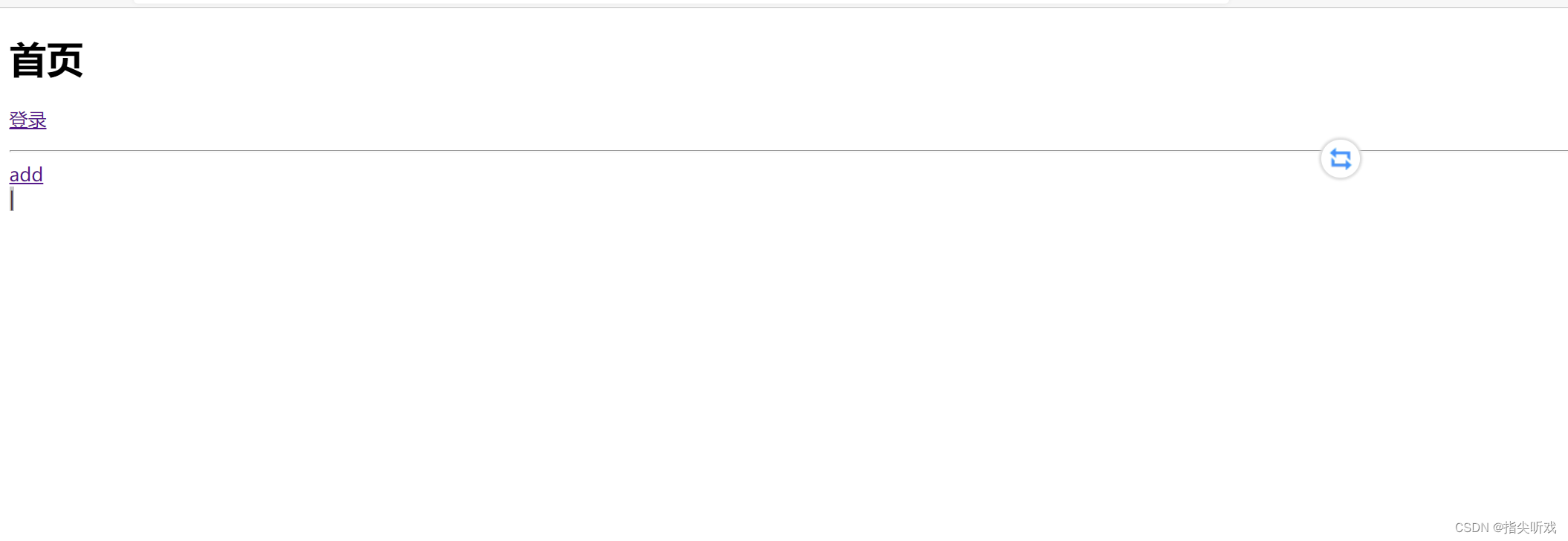
此时认证授权部分已经成功啦,以上就是我们进行的一个小小的demo,更深入的学习,后续继续更新。
到此这篇关于SpringBoot整合Shiro的方法详解的文章就介绍到这了,更多相关SpringBoot整合Shiro内容请搜索服务器之家以前的文章或继续浏览下面的相关文章希望大家以后多多支持服务器之家!
原文链接:https://blog.csdn.net/qq_38140292/article/details/124654909

